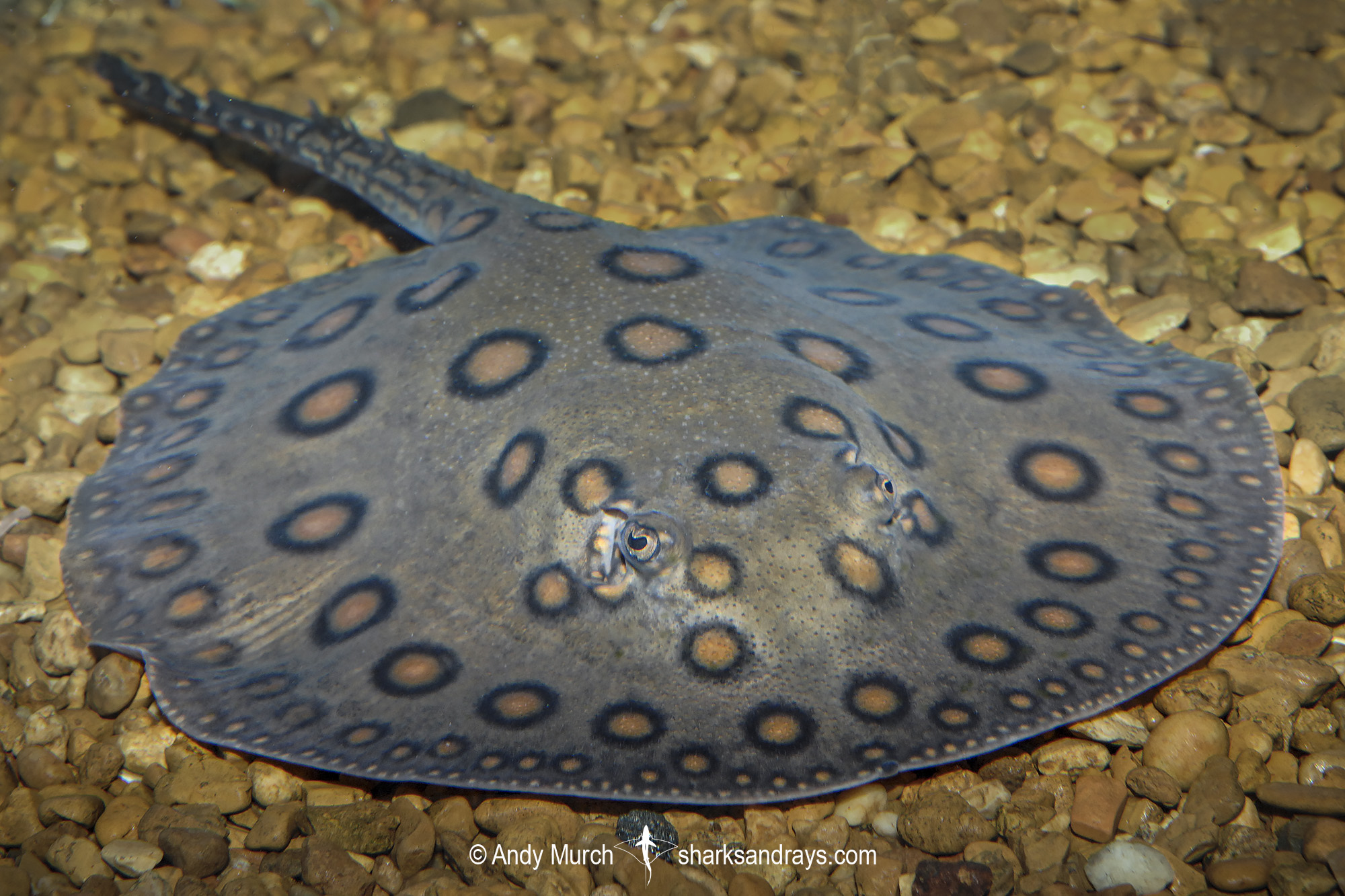Common name(s)
Ocellate River Stingray, Motoro Ray, Amazon Freshwater Stingray.
Identification
A medium-sized freshwater stingray with a thick sub-circular disc that is slightly longer than wide. Very small lobe on tip of snout. Head rather wide. Eyes bulging. Spiracles large. Nostrils thin. Nasal curtain skirt-shaped. Mouth relatively wide with 5 oral papillae.
Disc covered with star-shaped denticles; more densely grouped towards mid-disc. Pelvic fin posterior margins slightly posterior to, or level with disc. Tail broad, shorter than disc width, with low dorsal/ventral finfolds. 1 row of tall, upright thorns dorsally between disc insertion and caudal sting. Irregular row of small, low lateral thorns on each side of tail. Caudal sting origin posterior to midpoint of tail.
Colour
Dorsum light brown, olive brown, or grey with vivid, orange spots with yellow centres and black outer rings. Spots occasionally indistinct. Spots much smaller near disc margin. Ventrum off white or yellowish, usually with a dusky or brown margin, sometimes with small dark spots.
Size
Maximum disc width 48cm. Disc width at birth approximately 10cm.
Habitat
Tropical freshwater river systems. Favours slow moving water, sandy lagoon edges, brooks, and streams.
Distribution
South America. The ocellate river stingray is the most widespread species of neotropical freshwater ray, occurring in many river systems including the Paraná-Paraguay, Amazon, and Orinoco rivers.
Conservation Status
DATA DEFICIENT
All species of river stingray in the Parano-plata Basin reputedly have delicious meat and are harpooned by fishermen when seen in shallow water. Artisanal and commercial fishermen also catch some specimens on lines. The attractively patterned juveniles of this species are collected for the ornamental fish trade. The major threats to the species possibly derive from habitat degradation caused by the damming of the Río Paraná system for navigation and hydroelectric plants and the construction of many ports along the river.
Citation
Drioli, M. & Chiaramonte, G. 2009. Potamotrygon motoro. The IUCN Red List of Threatened Species 2009: e.T39404A10226461. https://dx.doi.org/10.2305/IUCN.UK.2005.RLTS.T39404A10226461.en. Downloaded on 10 March 2021.
Reproduction
Viviparous with trophodermic nutrition. Up to 11 pups per litter but usually 2-4. Litter size varies by region.
Diet
Diet consists of insects (especially mayflys and other flies), crustaceans, and small fishes.
Behavior
Buries during the warmest part of the day.
Reaction to divers
Somewhat difficult to approach. Will bolt if approached too closely.
Diving logistics
The ocellate river stingray can be encountered in numerous spots but the clear waters of the Rio Sucuri and other rivers around Bonito make this the ideal spot to encounter this ray. Snorkeling and diving tours can be arranged through many local operators once you arrive in Bonito. To maintain the cleanliness and health of the ecosystem, there are strict rules regarding what you can bring into the river including a ban on sunscreen so make sure you’re well covered.
What’s new
View our full list of updates
Similar species
Suriname Freshwater Stingray Similarly patterned but distinguishable by a darker dorsum with deep orange spots encircled by much thicker black rings.



